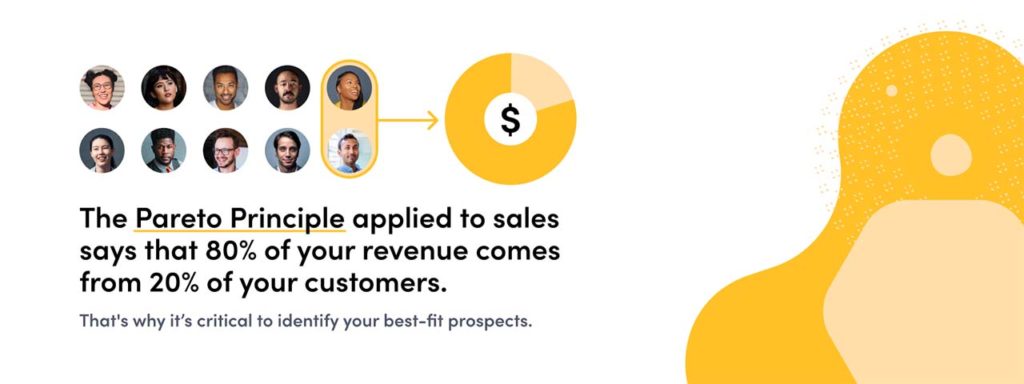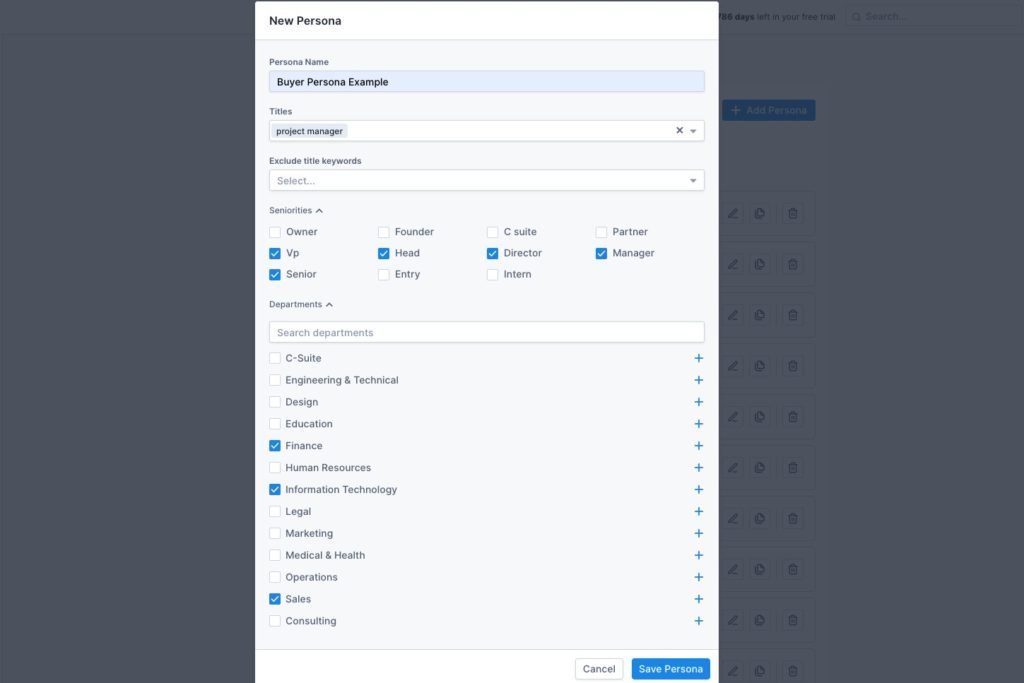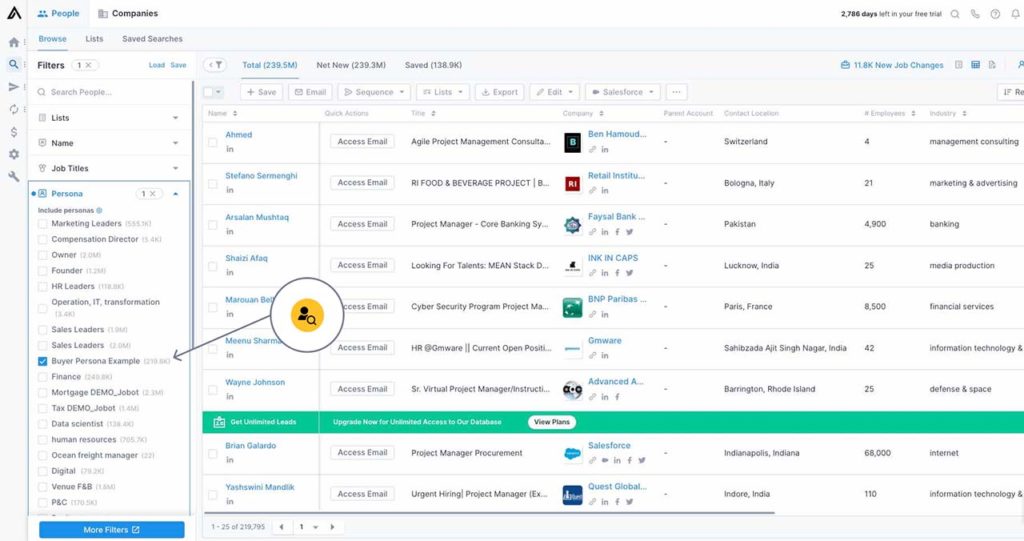How to Qualify Prospects with Apollo
Interested in closing more deals? It starts and ends with your qualification process. Learn how to qualify prospects with Apollo here.
by
Karli Stone
PUBLISHED Nov 9, 2023
5 Min Read
You're drowning in leads but your pipeline's still not converting. Sound familiar?
Here's the thing — not every lead deserves your time. In fact, most don't. While you're chasing unqualified prospects who'll never buy, your competitors are closing deals with the leads you should've prioritized. The difference between top performers and everyone else? They've mastered the art of qualifying prospects before investing a single minute in outreach.
Lead qualification isn't just about filtering out bad fits (though that's crucial). It's about focusing your energy where it counts, shortening your sales cycles, and actually hitting your targets without burning out your team.
If you're tired of wasting time on dead-end deals, you're in the right place. We'll show you exactly how to identify high-value prospects, the frameworks that actually work, and how Apollo turns qualification from a manual grind into an automated advantage.
Keep reading to discover the qualification strategies that separate closers from everyone else — and how to implement them at scale.
Why is lead qualification important?
Let's get technical…
A sales qualified lead (SQL)is a lead that closely matches one of your buyer personas. It is a prospective customer who has been vetted and is ready to talk to a sales team and enter the sales funnel.
When a lead becomes sales qualified, they can be accurately referred to as a 'prospect' and a good potential customer.
But why is it important to invest precious time and resources into qualifying prospects? Couldn’t sales teams treat every lead like a SQL and see what sticks?
No. No, they can't.
According to the Pareto Principle (or the 80/20 rule), 80% of your company's sales come from 20% of your customers.
It's a small base of customers that have the most interest in your solutions. And if you aren't identifying and attracting high-quality leads that have similar interests to your top customers, you're only wasting time.

When you dedicate yourself to lead qualification, it allows you to focus on the opportunities that matter. If you try to treat every lead like you would a qualified prospect, you'll lose high-value opportunities due to a lack of time and resources.
A qualifying process also helps you:
- Close more deals that last. If you have too many leads in your sales pipeline, you won’t be able to thoroughly nurture them. You may be able to close a deal that provides short-term value, but if they cancel a few weeks later, was it really worth it? Qualifying prospects results in happy, long-term relationships.
- Boost win rates. Studies have found that focusing on high-quality lead qualification raises conversion rates by 30% (no surprises there).
- Personalize messaging. When you qualify leads, you get a deeper look into their problems and pain points. This knowledge enables you to create personalized messaging and pitch relevant solutions.
Lead qualification vs lead scoring: what's the difference?
It's easy to get these two terms mixed up, but they serve different purposes. Think of it this way: lead qualification is about determining if a prospect is a good fit for your business at all. It's a 'yes' or 'no' gate. You're asking, 'Should we even be talking to this person?'
Lead scoring, on the other hand, is about prioritizing the qualified leads you already have. It assigns points based on a prospect's attributes and actions (like visiting your pricing page or downloading a guide). A high score tells you a lead is not just a good fit, but also highly engaged and ready for a conversation. Qualification decides who gets in the door; scoring decides who you talk to first.
Essential lead qualification criteria
Before you can use a fancy framework, you need to know what you're looking for. Your criteria are the building blocks of your entire qualification process. While every business is different, most successful qualification strategies are built on a few core pillars:
- Firmographics: Does the company fit your ideal customer profile (ICP)? Consider their industry, company size, location, and revenue.
- Technographics: What tools are they already using? Knowing their tech stack can reveal integration opportunities or signal a need for your solution.
- Need: Do they have a clear pain point that your product or service can solve? Without a real need, there's no deal.
- Buying Intent: Are they actively looking for a solution? Look for signals like recent funding rounds, hiring for key roles, or increased engagement with your content.
Nailing down these criteria ensures you're not just finding leads, but finding the right ones.
Qualification frameworks
Subscribe for weekly updates
Qualifying prospects isn't a one-size-fits-all solution. Every organization is looking for specific lead characteristics that fit their ideal customer profiles.
This is where a qualification framework comes in handy.
A qualification framework is essentially a rubric that salespeople can use to determine whether or not a lead should be a sales-qualified prospect. Implementing the right one will help sales teams to qualify their leads as efficiently and consistently as possible.
Let's take a look at some of the most utilized lead qualification frameworks:
B.A.N.T.
The BANT framework is one of the oldest methods for determining good-fit prospects:
| Budget | How much is the lead willing to spend? Where does their funding come from? Is there any flexibility? |
| Authority | Is the lead the decision-maker for purchasing your product or service? (Keep in mind buying authority could be more than one person. Make sure you engage all relevant stakeholders early in the buying process.) |
| Need | What challenge are they facing? Will your product or service solve the lead's business need or address one of their pain points? |
| Timeline | Will the lead implement your product or service in the near future? |
While BANT can be a helpful tool for initial qualification, it's very linear. If you choose to adopt it, you'll want to dig in a little deeper and/or make adjustments to the framework so it better fits your goals and buyer personas.
M.E.D.D.I.C.C
While BANT focuses on a lead's budget and authority, the MEDDICC framework is more concerned with the value that your product or service can provide to a lead. It requires sales reps to understand every aspect of a target company's purchase process.
| Metrics | How much money will your product or service make or save the lead's company? |
| Economic Buyer | Who has profit and loss responsibility for this? |
| Decision Criteria | What are their technical, vendor, and financial criteria? |
| Decision Process | What is the process like for the lead to approve purchase of your product? |
| Identify Pain | What are their primary business objectives? |
| Champion | Who will sell on your behalf? |
| Competition | Who are we competing against and why? |
This framework hones in on the lead's unique situation and decision-making process. And it can be especially valuable for increasing forecasting accuracy, which is especially crucial if you are selling to large enterprise companies.
F.A.I.N.T.
The RAIN Group is a big advocate for using FAINT to qualify sales leads. Here is the breakdown:
| Funds | Does this buyer have the financial capacity to buy? |
| Authority | Is this a decision-maker for buying your solution? |
| Interest | Through your education of how your solution can help the buyer achieve a new and better reality, have you generated an interest? |
| Need | What are their specific needs and how can you meet them? |
| Timing | Has buying intent been generated and what is the specific timeline to do so? |
The idea behind FAINT is that many purchase decisions are unplanned and don't have an allocated budget. It instead focuses on overall cash flow and places more emphasis on generating the interest of an ultimate decision-maker.
Overall, lead qualification frameworks can give you a lot of structure, but they aren't designed to be adopted into your prospecting process down to the tee. Analyze your buyer personas, along with your sales goals, and use these frameworks to create a reliable, data-driven process for deciding which leads to pursue.
Key questions to qualify prospects effectively
Frameworks are great, but they only work if you ask the right questions. Your goal isn't to run through a checklist; it's to start a conversation that uncovers the information you need. Here are a few powerful, open-ended questions to get you started:
- 'What prompted you to look into a solution for [problem] right now?' — This uncovers urgency and timing.
- 'What does your current process for [task] look like, and what's not working?' — This helps you identify their specific pain points.
- 'Who else on your team is typically involved in evaluating new tools like this?' — This clarifies their decision-making process and identifies key stakeholders.
- 'If you had a magic wand, what would the ideal solution for this challenge do for you?' — This reveals their desired outcomes and helps you align your value proposition.
The answers to these questions will give you all the ammo you need to populate your qualification framework and decide if a prospect is worth pursuing.
How to qualify prospects with Apollo
Deciding on your lead qualification criteria is just the half of it. You need a reliable database to give you the answers to those questions.
When you use Apollo, you have access to in-depth data points on over 220M contacts across 29M companies. Chances are, everything you need to know about your list of leads is in the Apollo database.
Byron Sierra-Mattos, an Enterprise Account Executive at Apollo, has witnessed enormous success from the accounts that use Apollo for qualifying prospects.
"Discovery calls are two minutes long when you use Apollo to do your research," Sierra-Mattos said, "By the time your leads are talking to you, you'll know if they use Salesforce, if they use HubSpot, if they are currently hiring, how many salespeople they have because it is all in Apollo."
This is why salespeople love us. When you prospect in the Apollo database, you are qualifying leads simultaneously!
We'll show you what we mean…
Start by creating a buyer persona by navigating to Settings > Personas. Your persona should reflect your ideal customer profile. It should include all of the attributes you need for a contact to be considered a sales-qualified prospect.

Once you save your persona, you can now use it to qualify contacts as you prospect on the Searcher.

Clicking on any of these contacts will direct you to their Apollo page. Here you can see employment history, in-depth company data, job postings, funding rounds, technologies used, employee metrics, and all the information you need to efficiently qualify prospects.
And, beyond this, a world of meaningful engagement awaits!
You can put these contacts into target lists, add them to specific sales sequences, instantly find verified email addresses and phone numbers, create new email campaigns, conduct further research on LinkedIn using the Apollo Chrome Extension, and so much more.
Start qualifying smarter prospects today
At the end of the day, you can rest assured knowing that when you prospect in Apollo with the proper lead qualification methods, your leads are primed and ready for your sales funnel. A systematic approach isn't just a best practice — it's a direct path to a healthier pipeline and higher win rates.
Stop wasting cycles on deals that were never going to close. It's time to focus your energy where it matters most. Ready to build a pipeline full of prospects who are actually ready to buy? Get Started with Apollo and see the difference.
Frequently asked questions about lead qualification
What's the difference between lead qualification and lead scoring?
Lead qualification is the process of determining if a lead fits your ideal customer profile (a 'yes/no' decision). Lead scoring prioritizes qualified leads by assigning points based on their attributes and engagement, telling you who to contact first.
What criteria should I use to qualify leads?
Start with the basics: firmographics (company size, industry), technographics (their current tech stack), a clear business need you can solve, and buying intent signals (like hiring for relevant roles or recent funding).
How many questions should I ask to qualify a prospect?
There's no magic number. Focus on quality over quantity. Aim to ask 3-5 powerful, open-ended questions that help you understand their pain, process, and priorities. The goal is a conversation, not an interrogation.
When should I disqualify a lead?
Disqualify a lead as soon as you confirm they don't meet your core qualification criteria. This could be a lack of budget, no real need for your product, or if they aren't the right person to talk to and won't connect you with a decision-maker. The faster you disqualify, the more time you save.
How often should I review my qualification criteria?
Review your criteria at least once or twice a year, or whenever you notice a shift in your market or ideal customer. Analyzing your best (and worst) customers from the previous year is a great way to refine your criteria and ensure they still align with your business goals.
Related articles
Subscribe for weekly updates
Receive insider stories and data-backed insights for elevating your work and staying ahead of the curve
You can unsubscribe at any time using the link in our emails. For more details, review our privacy policy.